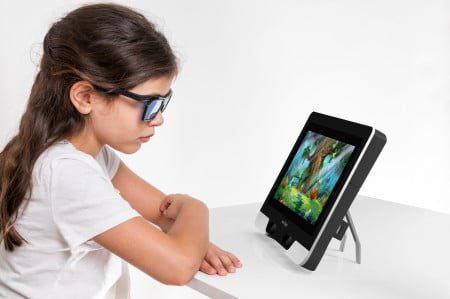March 16, 2021
NovaSight (Israeli-based) specializes in ground-breaking vision care solutions based on AI and eye-tracking technology, notes they are on track to achieving FDA 510(k) approval for its CureSight™ lazy eye digital treatment device.
This is the first pivotal study of its kind in children against the gold standard patching treatment.
Amblyopia, also known as lazy eye, affects 3% of the population and if left untreated, can lead to acute visual impairment. To date, lazy eye has been treated with the patch, the gold standard for treatment, a method which comes with social stigma and low adherence. As a result, amblyopia can persist into adulthood.
NovaSight CEO Ran Yam explains, “We’re delighted with the initiation of this important trial, key in demonstrating how effective our lazy eye treatment is while being fun and engaging for the patient. Our CureSight™ treatment allows children to enjoy a wide variety of content like TV programs, movies, and social media from home while treating and improving their vision. This is another important step on our journey of bringing revolutionary treatment for lazy eye to children everywhere.”
In addition, NovaSight advises following a previous pilot trial conducted at Sheba Medical Center in 2019 with 20 children, ages 4-15, it was demonstrated that with CureSight™ amblyopia treatment, visual and stereo acuity improved significantly with 95% adherence. At the half-year follow-up, improvements remained stable.
The current trial is recruiting 90 children with amblyopia aged 4 to 9 and is taking place in six different medical centers across Israel, including Sheba medical center, ranked as one of the 10 best hospitals in the world reports NovaSight.
Prof. Tamara Wygnanski-Jaffe, department head of Pediatric Ophthalmology and Strabismus at Sheba Medical Center said, “We often see children diagnosed with amblyopia and have been very frustrated with current treatment options. We are very enthusiastic to be participating in this trial and hope to see positive results from this clinical study, which will build on our previous clinical data and will advance our knowledge in this field. This represents an opportunity to significantly improve patient care and outcomes. Our patients and their parents are very pleased with the possibility of additional improved treatment options.”
CureSight™ is an eye-tracking-based lazy eye treatment targeted towards children and intended to replace the eye patch. The treatment is carried out while the child watches any content of choice while the image undergoes real-time image processing according to the momentary gaze position. Perfectly positioned for telehealth, it treats children from the comfort of home under the remote cloud supervision of the physician. Feedback is provided to caregivers and physicians via the cloud as well as remote real-time monitoring to measure adherence.
